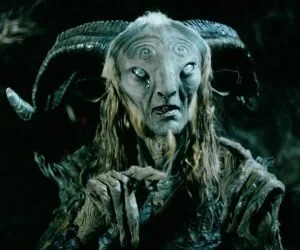On the surface, the ending of the 1920 classic silent film, The Cabinet of Dr. Caligari seems to be contradict the anti-authoritarian themes throughout the rest of the film—and in German Expressionism more broadly. But the lingering strangeness of the sets and that final, sinister shot of the Director suggest that the frame story is a deliberate deception, not merely something tacked on against the will of the writers that totally screws up their otherwise-masterpiece. As a bit of meaningful misdirection, the frame subverts our expectations and demands reinterpretation.
All in Dreamscape Horror
Surreal Idol
Perfect Blue likes to jar audiences out of escapism and suspension of disbelief as a way to get us to think critically about the film as a film—as a story, a fantasy, a constructed narrative. When you engage with the film in this way, assuming the film itself knows it’s a film, the nature of the story changes. It becomes clear that the film’s “reality” has been invaded by a surreality brought on by fan obsession with the fantasy of a J-pop idol. That fantasy comes to literal life in the film, as a metaphor for the real-life dangers of immersion, suspended disbelief, and escapism in the arts.
The Devils & the Offensive Truth
Ken Russell’s The Devils (1971) has been called the most controversial film in Hollywood history. Not just controversial for its time, Russell’s masterpiece remains shocking to this day in its depictions of cruelty, orgiastic sexuality, the evils of the 17th-century Catholic Church, and blasphemous imagery.
The film tells an old historical truth about political martyrs … and gets censored for it.
Henry Spencer's Nightmare of Fatherhood in Eraserhead
Everything in Eraserhead folds back on the protagonist, Henry Spencer. Every disturbing image, grating sound, jarring scene change, and bizarre dialogue tells us what’s happening in the film and what’s happening in his head, a terrible, body-horror inflected vision of paternal postpartum depression.
Pan's Labyrinth: The Trials of Ofelia
Guillermo del Toro’s fantasy horror classic, Pan’s Labyrinth (2006), is a coming-of-age story about Ofelia, a girl living in the fascist Spanish regime of Francisco Franco as an imperiled pregnancy brings about her mother’s death. In the end, Ofelia grows--she transcends these horrors--not by giving up childish fantasies, as she’s told to do, but by learning from them to hold to her convictions, keep her own counsel, and make moral choices, even when it means sacrificing herself.
Paperhouse: A Child’s Indelible Nightmare
Bernard Rose’s 1988 film Paperhouse blurs the line between dream and reality, focusing on a bedridden young girl who finds herself inside her own drawing of a strange house when she sleeps. In this stark but fantastic world, she bonds with another sick child while her dreams burn and char into a horrible nightmarescape, reflecting the indelible scars left by a child’s death and by parental abuse and alcoholism.
Schrödinger’s Kill List
Ben Wheatley’s Kill List (2011) is an odd film, at once ultra-violent and even-keeled, confused and focused, quiet and, thanks to expert sound design, deafening. While detail and precision give movies like The Wicker Man (1973) and Häxan (1923) their own special brand of disturbing, in Kill List, it’s the lack of detail, the haziness, the things you can’t figure out that make this film so bizarre and unsettling.









